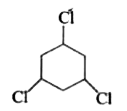In which of the following compounds does the ratio of anion to cation size have the lowest value?
NaCl
KCl
MgCl2
NaBr
The correct Answer is:B
To determine which compound has the lowest ratio of anion to cation size, we need to analyze the sizes of the cations and anions in the given compounds. The key is to find the compound where the cation is the largest, as a larger cation will lead to a lower anion-to-cation size ratio.
1. Identify the Compounds:
- We need to consider the compounds given in the question. Let's assume the compounds are KCl, NaCl, MgO, and others.
2. Identify the Cations and Anions:
- For KCl, the cation is K⁺ and the anion is Cl⁻.
- For NaCl, the cation is Na⁺ and the anion is Cl⁻.
- For MgO, the cation is Mg²⁺ and the anion is O²⁻.
3. Determine the Sizes of the Cations:
- The sizes of the cations are as follows:
- K⁺ (Potassium) is larger than Na⁺ (Sodium) and Mg²⁺ (Magnesium).
- The order of cation size from largest to smallest is: K⁺ > Na⁺ > Mg²⁺.
4. Determine the Sizes of the Anions:
- The sizes of the anions are generally similar for the compounds considered:
- Cl⁻ (Chloride) is larger than O²⁻ (Oxide).
5. Calculate the Anion to Cation Size Ratios:
- For KCl: Ratio = Size of Cl⁻ / Size of K⁺
- For NaCl: Ratio = Size of Cl⁻ / Size of Na⁺
- For MgO: Ratio = Size of O²⁻ / Size of Mg²⁺
6. Compare the Ratios:
- Since K⁺ is the largest cation, the ratio of Cl⁻ to K⁺ will be the smallest compared to the other ratios.
- Therefore, KCl will have the lowest anion to cation size ratio.
7. Conclusion:
- The compound with the lowest ratio of anion to cation size is KCl.
Final Answer:
The compound with the lowest anion to cation size ratio is KCl.
- We need to consider the compounds given in the question. Let's assume the compounds are KCl, NaCl, MgO, and others.
- For KCl, the cation is K⁺ and the anion is Cl⁻.
- For NaCl, the cation is Na⁺ and the anion is Cl⁻.
- For MgO, the cation is Mg²⁺ and the anion is O²⁻.
- The sizes of the cations are as follows:
- K⁺ (Potassium) is larger than Na⁺ (Sodium) and Mg²⁺ (Magnesium).
- The order of cation size from largest to smallest is: K⁺ > Na⁺ > Mg²⁺.
- The sizes of the anions are generally similar for the compounds considered:
- Cl⁻ (Chloride) is larger than O²⁻ (Oxide).
- For KCl: Ratio = Size of Cl⁻ / Size of K⁺
- For NaCl: Ratio = Size of Cl⁻ / Size of Na⁺
- For MgO: Ratio = Size of O²⁻ / Size of Mg²⁺
- Since K⁺ is the largest cation, the ratio of Cl⁻ to K⁺ will be the smallest compared to the other ratios.
- Therefore, KCl will have the lowest anion to cation size ratio.
- The compound with the lowest ratio of anion to cation size is KCl.
The compound with the lowest anion to cation size ratio is KCl.
Similar Questions
Knowledge Check
Which of the following compounds does not have any geometrical isomer?
A B
B C
C D
D
Which of the following compound does not have isolated diene
View SolutionWhich of the following compound does not have allylic chloride
View SolutionWhich of the following compounds has the lowest melting point ?
View SolutionWhich of the following compounds has the lowest boiling point ?
View SolutionWhich of the following compounds does not have an ester linkage ?
View SolutionWhich solution will have the lowest pH value ?
View SolutionWhich of the following compounds does not have any geometrical isomer?
View Solution
